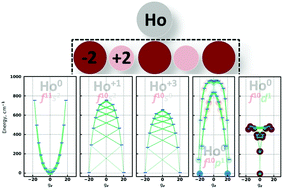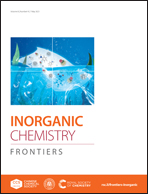Valence electrons in lanthanide-based single-atom magnets: a paradigm shift in 4f-magnetism modeling and design†
Abstract
The detailed electronic structure of single atomic magnets is a crucial bit in the further understanding and design of a new generation of monoatomic magnetic elements on surfaces and in molecules. Control and manipulation of the single atomic state, as well as long relaxation of magnetization, have been demonstrated for lanthanide atoms on carefully chosen supporting substrates. However, these convincing experiments are puzzling by insufficient theoretical description, usually omitting the valence electrons of lanthanide atoms. In this work, starting with an idea of the inevitable need of local d- and p-shell electrons for a proper description of the magnetic states of lanthanide atoms, we rationalized the electronic structure and magnetic properties of Ho atom on the MgO substrate using ab initio multiconfigurational approaches. By doing so, we obtained the solution which complements experimental observations and has been able to pin-point the atomic state which most likely to be responsible for the exceptional magnetic properties of Ho on MgO. This study demonstrates that new paradigms are needed for understanding and interpretation of the lanthanide single-atomic magnets.



 Please wait while we load your content...
Please wait while we load your content...